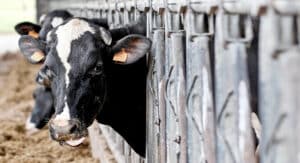Or does it spell “catastrophe” as detractors claim?
The new land law, promulgated with clear reservations by President Marcelo at the end of December last year, will allow municipalities to ‘free rustic land for the construction of homes for the middle class at accessible prices, thus having an anti-speculative effect”.
This is the view of the government, which today “guarantees that the new land law will reduce the price of new homes in metropolitan areas and district capitals by 20%, setting values below those registered in Portugal in 2024”.
In information sent to Lusa news agency, the Ministry of Territorial Cohesion points out that the “new law sets maximum prices for new homes that are below the average values of real estate transactions recorded in Portugal in 2024”.
He also used INE National Statistics Institute data to state that “the current average price of the square metre in new homes is 50% higher than that of used housing.
“Being able to buy new homes in which the maximum price limit is 20% below current market prices does not only prevents speculation, it stops it ,” says Minister for Territorial Cohesion Castro Almeida, quoted in the document.
Using an analysis of the values of new house deeds registered on the Confidencial Imobiliário platform in 2024, the ministry states that “the average square metre values of houses sold in the municipalities with the highest demand – Greater Porto, Greater Lisbon and district capitals – are notably higher than the maximum limit imposed by Decree-Law 117/2024.
“In addition to Lisbon and Cascais, where the difference reaches 45% and 48%, there are important cities such as Sintra (36%), Viana do Castelo (34%), Gaia (32%), Braga (28%), Vila do Conde (27%), Viseu and Setúbal (26%), Barreiro (24%), Oeiras (23%), Aveiro (23%) and Coimbra (21%), where the limit imposed by the new law is considerably below the prices currently practised on the market,” the information sent to Lusa continues.
Again using data, the government cites the “most recent from the Consumer Price Index (CPI) of the National Statistics Institute’ to point out that “in the third quarter of 2024 the average value of the square metre of new housing was 50% higher than the average sale value of used housing – and all the houses that will be born on rustic land that the municipalities transform into construction areas will be completely new”.
“Virtues of the law are not limited to fighting speculation”
Minister Castro Almeida maintains that ‘the virtues of the law are not limited to combating speculation (…), preventing the birth of buildings in the middle of rural areas’ and assures that “the transition from rustic to urban land is impossible whenever there are floodbeds, flood zones, land defined as suitable for agriculture by the National Agricultural Reserve or classified areas such as the Natura 2000 Network.
“In order to solve all the country’s housing problems, it will take much less than 1% of all available rural land,” while “dispensing with bureaucracy and central approval will not make local authority decisions any less transparent: not only do town council executives include opposition councillors, but municipal assemblies include representatives of the main parties and all the chairmen of parish councils”.
Emphasising that the new law will allow “municipalities to free up land for the construction of housing for the middle class throughout the country”, the document points out that “the land will have to be compatible with the existing urban area, and at least 70% of its area must be occupied by residential buildings”.
The ministry reiterates that the decision to release land for housing use “will only depend on the town councils and municipal assemblies – it won’t have to go to any other body”.
“The measure is included in the ‘Building Portugal’ plan and makes it possible, on an exceptional basis, to create construction areas on land that is compatible with existing urban areas.”
Certainly for Castro Almeida, “this is a good way to increase housing construction, guaranteeing prices within the reach of the middle class without dissuading companies in the property sector from investing”.
PS proposes changes to the decree
As the Resident has already explained, the announcement of this new law has sparked opposition particularly from the left, environmental associations/ organisations, while more than 600 ‘experts and former political leaders’ have criticised the measure in an open letter.
The National Association of Portuguese Municipalities is also reticent in that it believes councils have not (yet) got adequate training/ capacity to make these sweeping changes.
Forestry engineer Pedro Bingre Amaral, who is president of one of the country’s oldest environmental NGOs the League for the Protection of Nature, has also explained some of the ‘hidden detail’ behind the ‘re-classification’ of rural land to urban, telling Lusa that once homes are built on this land, the taxable value of that land multiplies exponentially.
For Amaral, this new law “poses several risks, financially, urbanistically and environmentally”.
Yes, in one respect “if the state is the only person who can subdivide – I’m not saying build, but subdivide – public land, the state can control land prices and, through that, bring down housing prices,” but in another respect, by giving councils and municipal assemblies the power to reclassify rural land as urban for housing construction, the new law “further precipitates the end of the rural world”.
“As soon as the prospect of a landowner multiplying the value of his land by a thousand times with a subdivision licence hangs in the air, he immediately becomes disinterested in agriculture and forestry,” argues Bingre.
“The land remains outside the agroforestry market. And so, as we already have little land suitable for agriculture, and those that are most suitable are the ones that will suffer the most from this price contagion, from the moment the law was announced, prices already started to rise,” he adds.
In Amaral’s analysis, all land outside of those areas ‘protected’ (REN/ Natura 2000 etc.) “will become potential building areas”, on which the government hopes to see as many as 19 million accessible homes constructed.
All these concerns are being discussed as parliament is due to “give its opinion” on the situation on January 24.
As things stand however, the law is now the law…
natasha.donn@portugalresident.com
Source material: Lusa/ SIC
























